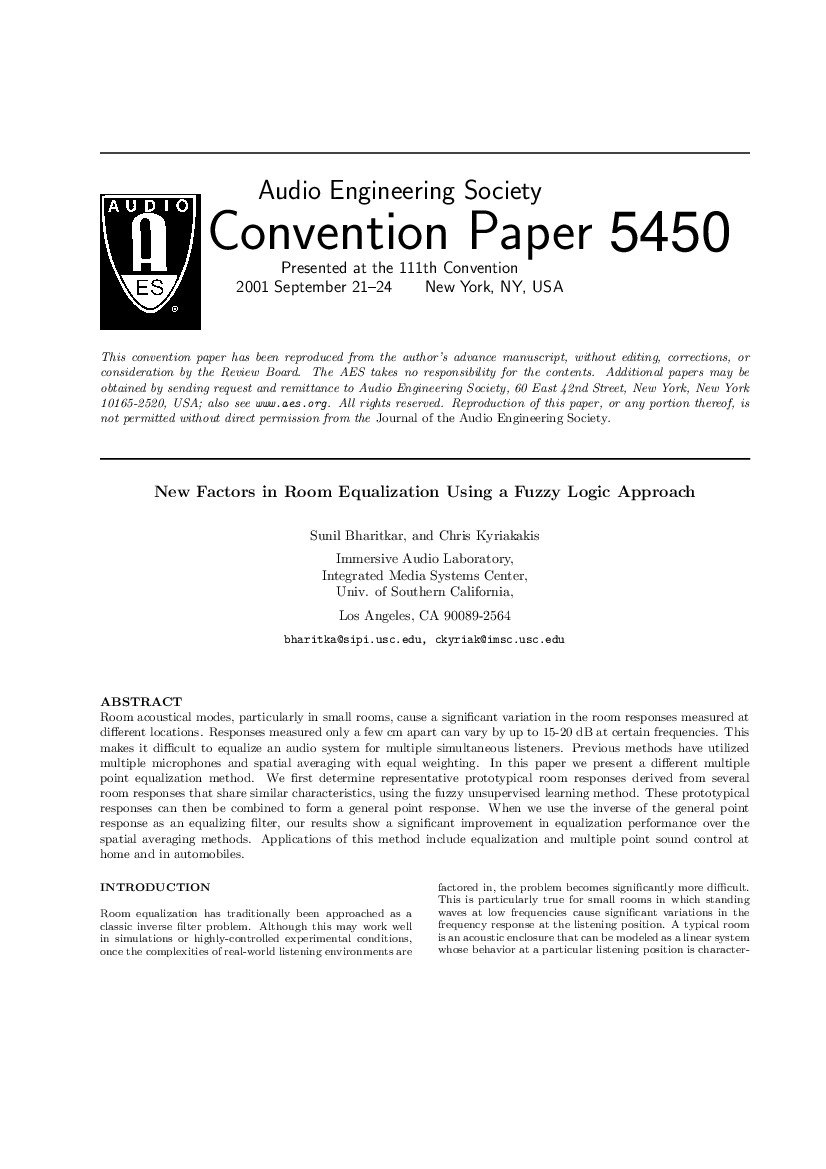Home / Publications / E-library page
You are currently logged in as an
Institutional Subscriber.
If you would like to logout,
please click on the button below.
Home / Publications / E-library page
Only AES members and Institutional Journal Subscribers can download
Room acoustical modes, particularly in small rooms, cause a significant variation in the room responses measured at different locations. Responses measured only a few cm apart can vary by up to 15-20 dB at certain frequencies. This makes it difficult to equalize an audio system for multiple simultaneous listeners. Previous methods have utilized multiple microphones and spatial averaging with equal weighting. In this paper we present a different multiple point equalization method. We first determine representative prototypical room responses derived from several room responses that share similar characteristics, using the fuzzy unsupervised learning method. These prototypical responses can then be combined to form a general point response. When we use the inverse of the general point response as an equalizing filter, our results show a significant improvement in equalization performance over the spatial averaging methods. Applications of this method include equalization and multiple point sound control at home and in automobiles.
Author (s): Kyriakakis, Chris; Bharitkar, Sunil
Affiliation:
Immersive Audio Laboratory, Integrated Media Systems Center, Univ. of Southern California, Los Angeles, CA
(See document for exact affiliation information.)
AES Convention: 111
Paper Number:5450
Publication Date:
2001-11-06
Import into BibTeX
Session subject:
Instrumentation and Measurement
Permalink: https://aes2.org/publications/elibrary-page/?id=9839
(943KB)
Click to purchase paper as a non-member or login as an AES member. If your company or school subscribes to the E-Library then switch to the institutional version. If you are not an AES member Join the AES. If you need to check your member status, login to the Member Portal.

Kyriakakis, Chris; Bharitkar, Sunil; 2001; New Factors in Room Equalization Using a Fuzzy Logic Approach [PDF]; Immersive Audio Laboratory, Integrated Media Systems Center, Univ. of Southern California, Los Angeles, CA; Paper 5450; Available from: https://aes2.org/publications/elibrary-page/?id=9839
Kyriakakis, Chris; Bharitkar, Sunil; New Factors in Room Equalization Using a Fuzzy Logic Approach [PDF]; Immersive Audio Laboratory, Integrated Media Systems Center, Univ. of Southern California, Los Angeles, CA; Paper 5450; 2001 Available: https://aes2.org/publications/elibrary-page/?id=9839